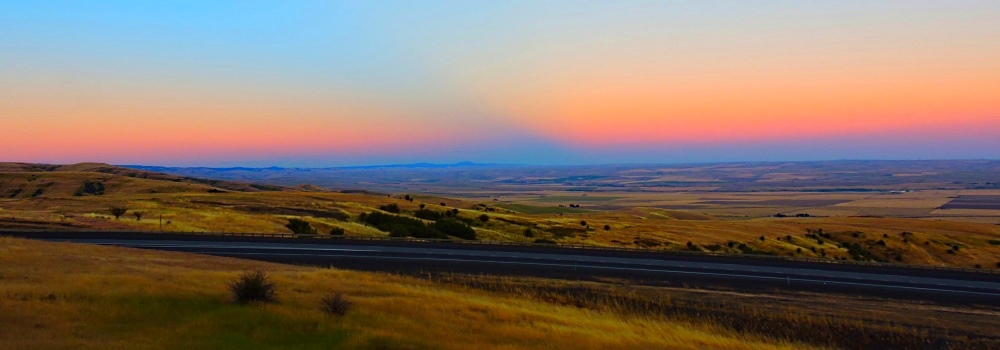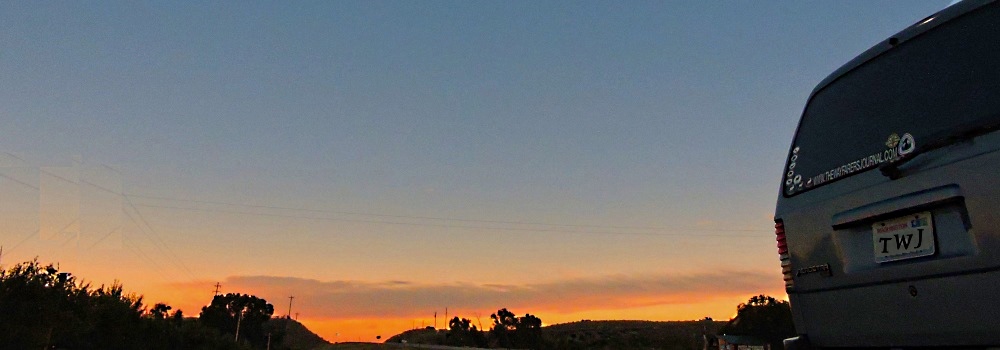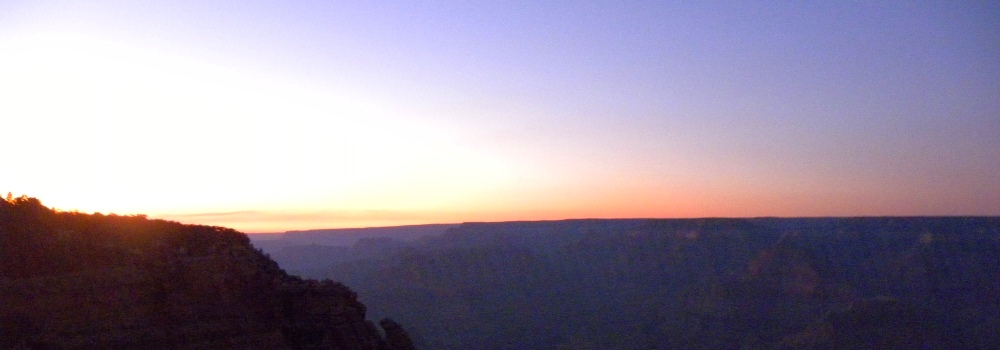|
The Glossary Definition
Belt of Venus n. astr. 1. An atmospheric phenomenon seen at sunrise and sunset, when the the sky has a pinkish glow (or anti-twilight arch) that extends roughly 10°–20° above the horizon, cause by backscattering of reddened light from the rising or setting Sun. This glow is often separated from the horizon by a dark layer or shadow, know as the dark segment. 2. Also know as Venus's Girdle and Venus's Belt. 3. A very similar effect can be seen during a total solar eclipse.
The Venus Belt
The observer of the atmospheric phenomenon, Venus Belt is often completely surrounded by the pinkish glow, (called the anti-twilight arch) that may extend from 10° to 20° above the horizon. The thickness of the anti-twilight arch can be measured with the hand width. (One
hand width equals Ten Degrees.)
Like alpenglow, the backscatter or reddened sunlight creates the Venus Belt which is visible above the horizon during twilight near the
antisolar point. Unlike alpenglow, the sunlight refracted by the fine particulates that cause the rosy arch of the Belt hovers high in the atmosphere and persists long after sunset or before sunrise.
From Earth′s perspective, the greatest elongation (separation) between the Sun and Venus only amounts to 46 degrees, thus the planet Venus, even when visible, can never be seen opposite the sun and therefore, is never seen within the Belt of Venus.
A similar phenomenon, the zodiacal light, is caused by the diffuse reflection of sunlight from the interplanetary dust in the Solar System.
The Dark Segment Below
Sometimes, the Venus belt will have dark segment below it separating the Venus Belt from the horizon. This dark segment is commonly know as the
Earth shadow.
In this case, the Venus Belt is the arch of pinkish light above the Earth shadow. Too, the sun cast the Earth shadow from the point of the
suntouch and onto the opposite horizon as an atmospheric phenomena.
During a Total Eclipse
One of the most amazing examples of the Venus Belt, or at least a similar effect as the Venus Belt is during the time of a total solar eclipse. What occurs to cause this effect is when the light from the sun is blocked by the moon, sunlight is still able to shine past the moon which allowing some light to reach the earth.
The resulting colors are from a phenomenon called scattering which occurs when molecules and small particles in the atmosphere change the direction of light rays, causing them to scatter.
How Scattering Affects Light Rays
This scattering affects the amount of light coming from the sky, but the amount of scattering of the different colors of light is determined by both the wavelength of the light and by the amount and size of the particles.
The short-wavelength blue and violet rays are scattered by molecules in the air much more so than other colors of the spectrum. This is why blue and violet light reaches our eyes from all directions on a clear sunny day. However, it is because we can not see violet very well that the sky appears to us to be blue.
Increased Atmosphere, Increased Scattering
When the rays of sunlight pass through more atmosphere, such as during the suntouch and during a total eclipse, the light rays must also pass through more molecules. The first light rays to be scattered are the light rays with the shorter wavelengths, the blue and violet rays. Also, if the path the light travels through the atmosphere is long enough, all of the blue and violet rays will be scattered. What remains to reach the observer′s eye are those rays with longer wavelengths, the orange, red and yellow light rays.
Since red light rays have the longest wavelength, this is why the sun is red when it is at suntouch, a time when the extremely long path through the atmosphere blocks all other light rays.
| 








